Simplicity in all things mechanical is an asset. Look under the hood of a modern car and you can assume there is an engine in there, providing it’s not all-electric, but as to what you are looking out and how to identify it has become a bewildering exercise. That wasn’t the case in the ’50s and especially with British sports cars, they were a contrived statement of modern antiquity – and appreciated for it. Need an example? Here’s one, a 1958 Triumph TR3 roadster, located in Vorhees, New York, and available here on craigslist for $5,900. Thanks to Ikey H. for this tip.
The Triumph TR3 succeeded the TR2 and preceded the…? If you guessed TR4, you would be mostly right but there was a TR3A (’58 to ’62) though it was still officially referred to as a TR3. The differences were primarily a wider grille, exterior door handles, a lock for the trunk (boot) lid, and a toolset. The TR3 had already moved to front disc brakes in ’57, so they were not an improvement for the TR3A as is sometimes reported. The TR3/3A, 71K copies in total, were produced between 1955 and 1962 with about 10% of the total destined to stay in the UK and the remaining 90% headed overseas.
This TR3 example has been parked in dry storage for years. That’s good but not good enough as the tin worm had done its damage to the floors by then. This is a New York state domiciled car and it has been off of the road since 1986 so the damage must have occurred prior to nap time.
But all is not lost, the seller claims that the upper body and frame are solid. There are a few bumps and contusions in places and some missing trim too. The repainted orange finish (it was originally green) has its share of scrapes but it appears to be mostly all there, minus the grille – no word on its whereabouts. And as can be seen in this image, the tacked-on luggage rack, while maybe functional, is not exactly in keeping with the TR3’s sculpted lines. And speaking of this image, it’s curious; it looks like this TR3 has suffered a back end explosion that blew off the hatch and dislodged the spare – odd positioning. Of note, the convertible top would probably work better as a radio antenna, there’s a convertible frame but no top; no mention of side curtain availability either. Regardless of this TR3’s weary aesthetics, it still looks pretty sound and its wire wheels and knock-offs help to pull it together. That said, the original green finish would be more fitting for a car of this nature.
Under the bonnet is a 2.0 liter, in-line, four-cylinder engine that develops 100 HP. The seller states, “Engine in good condition, last time started (checked up) couple years ago.” I think this is a new take on the old, “ran when parked” claim so I’d mark this TR3 as non-operational. The seller adds that the four-speed manual gearbox “seems in good working condition, switching gears but it has an oil leak.” And yes, the leak is readily visible, along with a differential lubricant leak, in the accompanying images. But simplicity abounds so perhaps getting the “go” back in this Triumph won’t be a titanic task.
Honestly, the interior looks like tetanus shot territory. The passenger seat is missing, we know about the floor pan shortcomings and there is a mold-like substance on the switch-gear and instrument panel. But other than that… The interior is going to need a complete redo but the original gauges and steering wheel are still in place and owing to the minuscule interior volume, it shouldn’t be too overwhelming a task. There are a couple of holes in the instrument panel that would appear to have housed something of an electrical nature, and probably something important, so it would be worth knowing what occupied those spaces.
While an exercise in simplicity, British sports cars always seem to have a magnetic attraction to rust, and this one is no exception. Even so, this TR3 sportscar is still passable, it just needs typical help. Concerns should abound about the engine, if it ran a couple of years ago, the seller would be best served by trying to get it to run now. This “should run”, “might run”, “did run”, “ran when parked”, “used to run” etc. is a continuing thread in so many listings, actually in too many listings. While not a rare car, at least based on volume, this Triumph still seems to be a pretty good starting point for building a nice, simple, enjoyable driver. Providing of course, that the engine isn’t a boat anchor, and the missing sheet metal real estate is limited to the passenger compartment footwells. So readers, what’s everyone think? Is it worth taking this example on as a restoration project or are there too many unknowns?
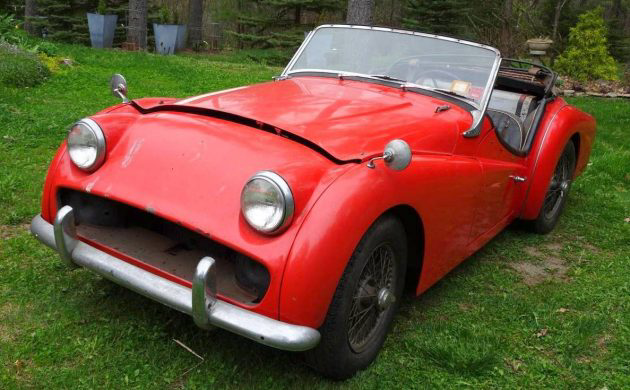
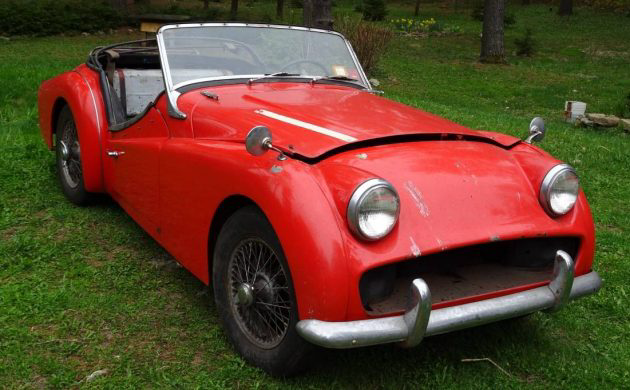
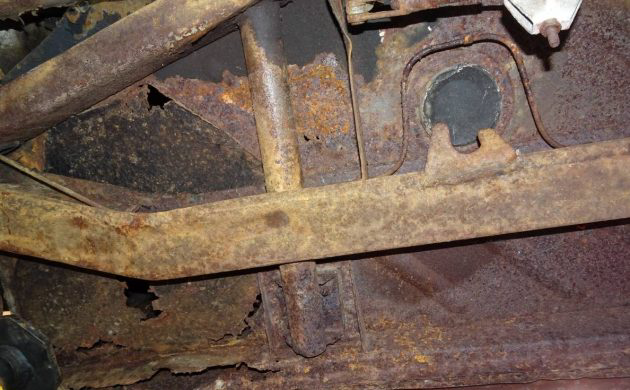
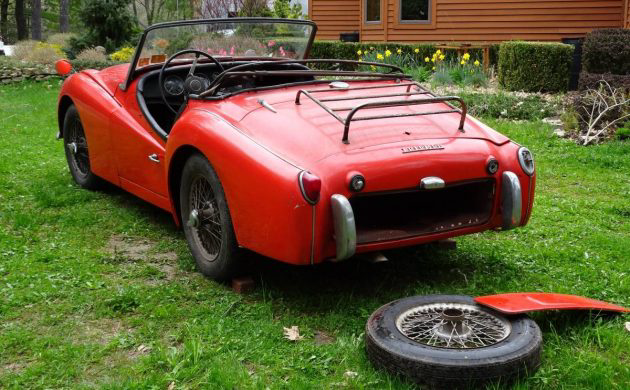
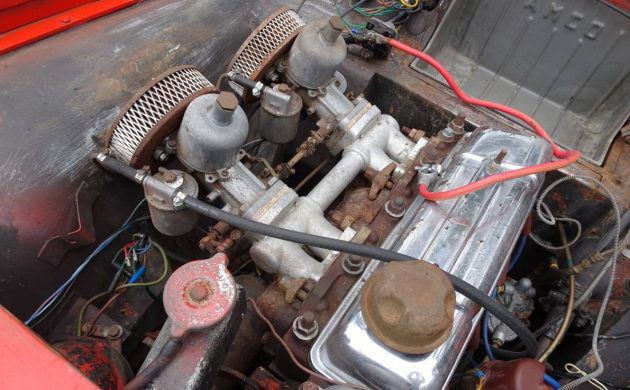
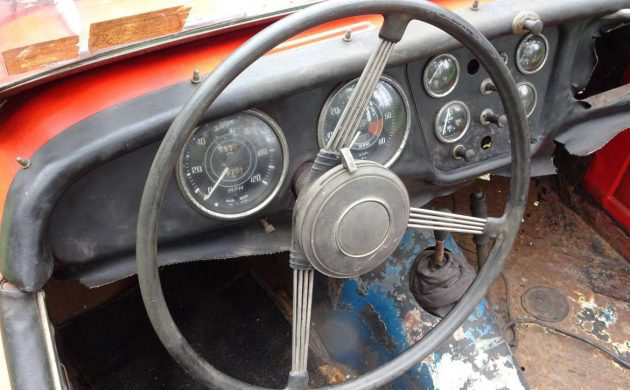
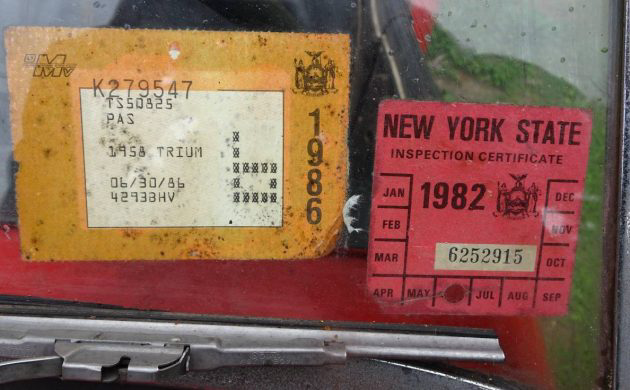
Good looking lines.
Classic style.
Price is attractive.
BUT lots of RUST underneath on this one.
I expect the Buyer to be either a person with mad metal skills, or someone who is looking for a parts donor car.
Perhaps that explains the missing grill….
Explosion, positioning…? Keep it real. If the frame is good the lower sheet metal is all available. Getting the body off the frame is easy and makes working the underside of the body pretty straight forward. Grills available too.
I’ve had my TR3B since 1967. On the plus side, you can now buy new, replacement floor panels from several outlets, even Amazon and E Bay have them available, with 2 day delivery.
Moss Motors, The Roadster Factory and a few other North American sources are there. For the more esoteric bits and pieces, Rimmer, Revington and Holden in the UK can take care of you. All the fenders are bolted on and it has an old fashioned frame under the body. So the body work is pretty straightforward.
The wet sleeve engine can be rebuilt an almost infinite number of times with new cylinders and pistons and tweaked as much as you see fit, from a mild street race cam to a full bore race with Webers and an OD Trans.
Your only problem will be deciding which of the grandkids will get it when you go.
A bargain? Well, it’s the last TRUE British Triumphs. The rest were either Italian or German designs. Along with the Morgan, the last of the low door sports cars. It’s strong and reliable. Don’t overload the system and the electricals work just fine. No matter what you have heard. As far as the “tractor “engine dig is concerned, I have never heard a +4 Morgan owner complain about theirs. Parts are cheap, relatively, and very available. It’s easy to work on. bobhess is right in the frame concern. That considered, if old Brits are your fancy, everything bolts on. And because it’s a real roadster, so do the windows!
The two holes are for the “charging” light (red) and the Key switch (kinda important, both). The underside pic in the post shows serious rust in the right inner sill as well as the floor. Floor easy to replace, inner sill, not so much (ask the man who has done it, me). As for the trans leak, kind of expected as this vintage trans actually has a dipstick accessible from the passenger footwell to periodically check and top up the oil, These use 20Weight motor oil in the trans, not thick gooey stuff which might stay in longer. Decent price as most missing parts are readily available and it sounds like the engine shouldn’t be too hard to bring back to life. Have had mine since 1973, now fully restored but showing some wear again. Still a blast to drive, even if I am 75 yo!
This is the second time around for this one, isn’t it? I think I remember seeing it before. Don’t recall the asking price. GLWTS.
Holes for the front apron lettering are filled. Why? Disguising what it is? Better aerodynamics? Bad repair job? Get the repro grille but fit it up to the hole before repainting. It likely won’t fit right so you are faced with either cutting the grille or shaping the nose hole around the grille. Too many 3s have concave or convex grilles indicating front end damage.